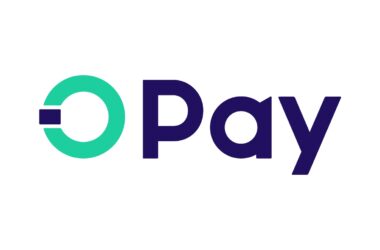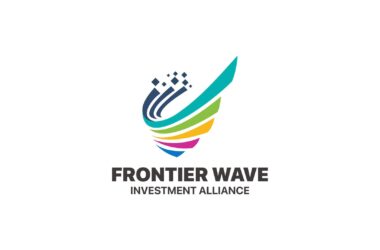Budgeting is one of the fundamental steps of personal financial management. The term, unfortunately, has been overused and beaten so much that it has become a cliche’. Regardless of this however it remains a very important process through which both personal and corporate finances can be managed.
Merely making a budget is not enough, the budget has to be prepared in an orderly manner in order to be effective. So without any further delay, let us look at the 4 steps that can improve your budgeting process.
Table of Contents
Step 1: Inflow – Outflow
This is the first step to making a budget. Calculating the total cash inflow and outflow. The cash inflow comprises the total income that a person or a household is earning. This can include income from salary and other sources such as profit on debt and investments etc. Knowing the income level is important as this will determine the saving and spending rates.
Calculating the outflow can be a bit more time consuming than calculating the income. A simple way to calculate the outflow is to look at the monthly bank statement and calculate how much the monthly expenditure is. It is better to take an average of four to six months.
Ideally, the outflow must be less than the inflow. If your outflow is more than your inflow, then this is a serious matter of concern. You are overspending and therefore you need to take instant remedial measures to bring your expenditures below your income level.
Step 2: Determine the Spending and Saving Rate
According to the bureau of statistics, the average household spending rate in the United States is approximately 80%. This is quite a high spending rate that leaves little room to build up savings. This statistic alone shows that American society is geared towards spending rather than saving, a trend that may not be very healthy if we consider personal financial management of individual households.
Budgeting requires careful analysis and determination of saving and spending rates. Once you have figured out your outflow and inflow you can easily calculate the savings and spending rate. This task can become easier if you use any personal budgeting application.
If you follow the saving and spending patterns of an average American then your base saving and spending rates should be around 20% and 80% respectively. Now that you have got your base rates, you can devise a strategy to increase or decrease these rates to achieve your financial goals.
An average person or household can easily attain a savings rate of 30% to 40% without drastically changing their lifestyle. More committed individuals or households can even achieve a 65% savings rate by going minimalist and adopting FIRE lifestyle.
If your current savings rate is 20% and you aim to achieve 35% savings, then it is preferable to proceed step by step. Take a tiered approach, set personal goals to achieve a 2% increase in savings rate each month. This should give you a target of 7 – 8 months to achieve the 35% savings figure.
Step 3: Cost-Cutting Measures
Having a high spending rate is a sign of being spendthrift, which is not necessarily a bad trait if you have got the income to support it. If however, you are looking to achieve some financial goal and your spending is getting in the way of that goal, then you will need to change a few habits in order to attain your objective.
Cost-cutting does not have to happen all at once. You should not expect yourself to take your savings rate from 20% to 35% overnight, as we discussed in the last section. Go for a tiered approach. Start with baby steps and try to cut expenditures that seem unnecessary.
i- Discount Offers
A simple way to start reducing the expenditure is to look for discount offers. Stores churn out discount offers every now and then, try to take advantage of such offers to benefit from lower costs.
ii- Make a Grocery list and stick to it
Making a grocery list is yet another cliche’ in the much-cliched universe of budgeting. Yet, it is one of the oldest tricks in the books. When we do not make a list for our groceries, we tend to overspend simply because our impulse buying habit kicks into action.
Making a list, keeps us focused and helps prevent overspending. Try to get all the family members together while making the list so that everyone knows what they need. Impulse buying should not be eliminated completely, otherwise what is the point of earning money? It is also important to treat yourself and your family.
It is, therefore, preferable to keep a bracket limit for impulse buying. You can dedicate a certain sum of money for your impulse buying habit and make sure that you stick to that limit.
iii- Get rid of subscription-based TV, go Netflix and chill
If you are looking for a more aggressive cost-cutting regimen, then try to eliminate expenditure that you can do without. If you have got a newspaper subscription, perhaps get it cancelled and read the news online.
Got a tv subscription as well as a streaming subscription on Netflix, Amazon Prime and Disney+? Well, why not ditch the tv subscription? It will save at least a hundred dollars, perhaps more if you had subscribed to more channels. The viewership of subscription-based tv channels is reducing anyway. So why not save up and stick to streaming services that offer on-demand content.
iv- Walk more, drive less
Try to cut down on fuel and maintenance cost of your car by walking where possible. If you have to go across the block, then try walking instead of using the car. It will not only save up fuel costs but also be beneficial for your health.
v- Farmer’s market vs Chain stores
Shop for fresh vegetables at your local farmers market, where the prices are much cheaper for fresh vegetables. Chain stores like Walmart charge more because of their branding, cleaning and packaging. If you are looking to go on a cost-cutting regimen then you can simply shop for vegetables and fruits at your local farmers market.
Step 4: Emergency Fund
Budgeting is not just about cost-cutting, it is also about planning ahead for the future. This is one grave mistake that many people make. While budgeting and setting up the target for the savings rate, it is important to set up an emergency fund.
An emergency fund can be set up in separate savings or current account in a bank. The purpose of the savings account is to act as a financial cushion in case of any financial emergency. House and car repairs can be required at any time, this is when emergency funds can come in handy and prevent you from turning to a bank for a personal loan to fund your emergency expenditures.
Therefore by following the above mentioned 4 steps, the process of budgeting can be streamlined and improved. The purpose, remember is to learn good personal financial management habits through the process of budgeting. It would be better to use any free or paid budgeting app, most tops of the line apps come with insights, analysis and guidelines on how to improve the budgeting and attain your financial goals. All it takes is a little effort and power of will!
















Recent Comments